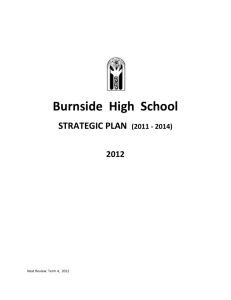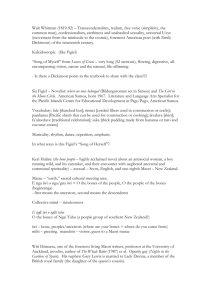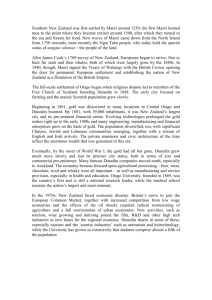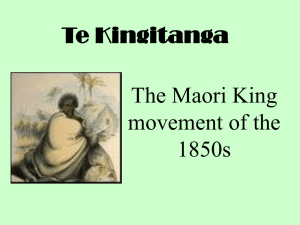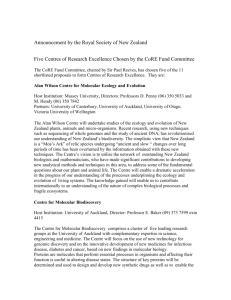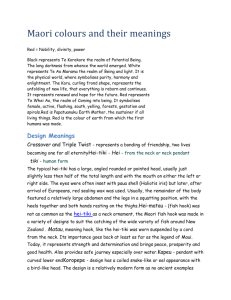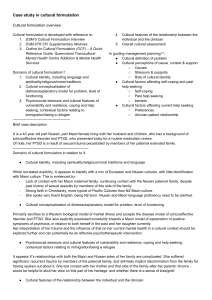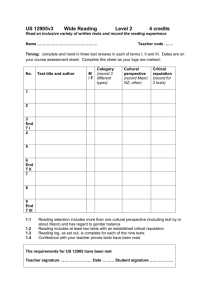Maori
advertisement
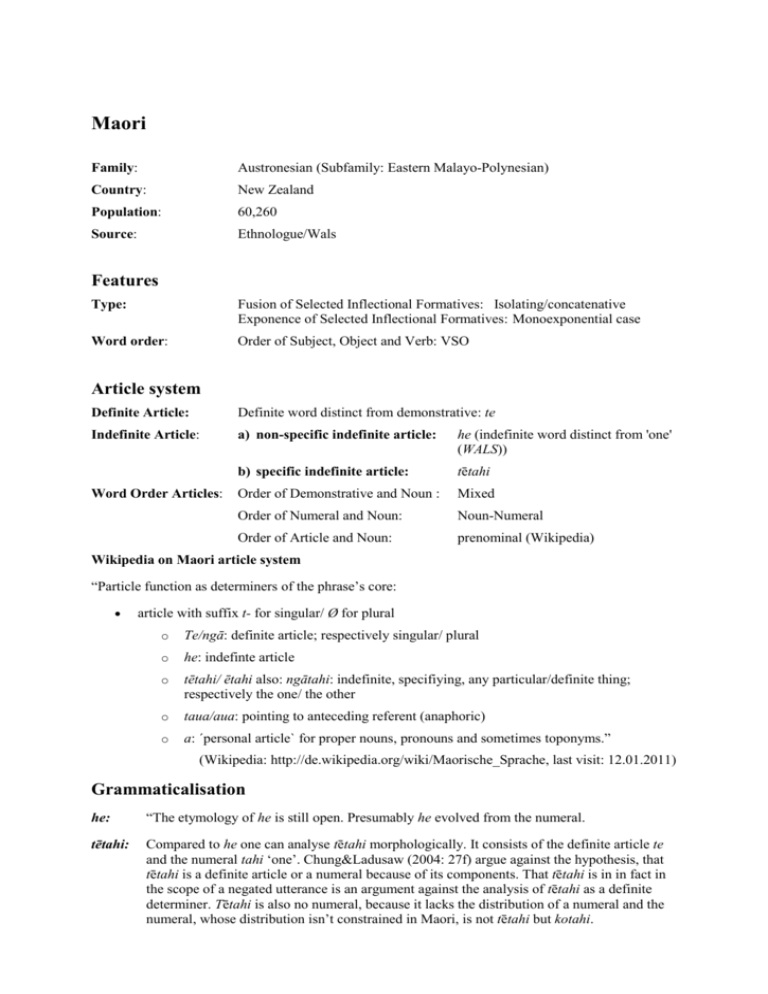
Maori Family: Austronesian (Subfamily: Eastern Malayo-Polynesian) Country: New Zealand Population: 60,260 Source: Ethnologue/Wals Features Type: Fusion of Selected Inflectional Formatives: Isolating/concatenative Exponence of Selected Inflectional Formatives: Monoexponential case Word order: Order of Subject, Object and Verb: VSO Article system Definite Article: Definite word distinct from demonstrative: te Indefinite Article: a) non-specific indefinite article: he (indefinite word distinct from 'one' (WALS)) b) specific indefinite article: tētahi Order of Demonstrative and Noun : Mixed Order of Numeral and Noun: Noun-Numeral Order of Article and Noun: prenominal (Wikipedia) Word Order Articles: Wikipedia on Maori article system “Particle function as determiners of the phrase’s core: article with suffix t- for singular/ Ø for plural o Te/ngā: definite article; respectively singular/ plural o he: indefinte article o tētahi/ ētahi also: ngātahi: indefinite, specifiying, any particular/definite thing; respectively the one/ the other o taua/aua: pointing to anteceding referent (anaphoric) o a: ´personal article` for proper nouns, pronouns and sometimes toponyms.” (Wikipedia: http://de.wikipedia.org/wiki/Maorische_Sprache, last visit: 12.01.2011) Grammaticalisation he: “The etymology of he is still open. Presumably he evolved from the numeral. tētahi: Compared to he one can analyse tētahi morphologically. It consists of the definite article te and the numeral tahi ‘one’. Chung&Ladusaw (2004: 27f) argue against the hypothesis, that tētahi is a definite article or a numeral because of its components. That tētahi is in in fact in the scope of a negated utterance is an argument against the analysis of tētahi as a definite determiner. Tētahi is also no numeral, because it lacks the distribution of a numeral and the numeral, whose distribution isn’t constrained in Maori, is not tētahi but kotahi. Both articles reached Heine’s fifth stadium, as they have predicative uses.“ (translated from Venneri (2009:24-26)) References Particular sources on specificity Bauer, Winifred. 1993. Maori. London: Routledge Bauer, Winifred. 1997. The reed reference grammar of Maori. Auckland: Reed Chung, Sandra & Ladusew, William A. 2004. Restriction and Saturation. Linguistic inquiry monographs 42. Cambridge: MIT Press. Polinsky, Maria 1992. „Maori he revisited.” In Oceanic Linguistcs 31, 229-250 Venneri, Diana Katarzyna (2009). Artikelsysteme zum Ausdruck von Spezifität am Beispiel von Maori, Marokkanisch, Usbekisch und Samoanisch. Stuttgart: Magisterarbeit. Grammar Bauer, W. A. (1993). Maori. London: Routledge. Bauer, W. A. (1997). The Reed reference grammar of Maori. Auckland, New Zealand: Reed. Biggs, B. (1969). Let's learn Maori: A guide to the study of the Maori language. Wellington, New Zealand: A.H. & A.W. Reed. Biggs, B. (1990). Me ako tatou i te reo Maori (trans. C. Barlow). Auckland, New Zealand: Billy King Holdings Ltd. Harlow, R. (2001). A Maori reference grammar. Auckland, New Zealand: Longman. Harlow, R. (2007) Maori: A linguistic introduction. Cambridge: Cambridge University Press. Maunsell, Robert: Grammar of the New Zealand Language. 2. Auflage Auflage. W. C. Wilson, Auckland 1862 (http://www.nzetc.org/tm/scholarly/tei-MauNewZ.html, abgerufen am 8. Mai 2008). (Reference to article system) McWhorter, John H. The world's simplest grammars are creole grammars. In Linguistic typology 5 2001,2-3, 125-417. Tomalin, Marcus. ... to this rule there are many exceptions: Robert Maunsell and the grammar of Maori. In Historiographia linguistica 33 2006, 3, 303-334. Miscellaneous Gorriea, Colin; Kellnera, Alexandra; Massama, Diane. Determiners in Niuean. In Australian Journal of Linguistics 30 2010, 3, 349 - 365 Abstract This paper addresses the issue of whether there are determiners in the Polynesian language Niuean. In the literature, determiners are viewed as having three main functions: allowing a nominal phrase to serve as an argument, encoding definiteness and specificity, and providing referentiality. The left peripheral elements in the Niuean noun phrase are detailed, and it is argued that case in conjunction with a feature for proper/common serves the first function, that definiteness and specificity are not encoded in Niuean except in a secondary manner, and that referentiality is provided by number, which is distributed across several items in the noun phrase. It is demonstrated that while definiteness and specificity are not contrastive features in Niuean, a feature encoding focused and new information is central to the Niuean nominal system. Niuean thus supports a view of determiners that allows them to vary in their semantic and featural content. Keywords: Determiners; Definiteness; Specificity; Case; Proper Nouns; Number; New Information; Focus; Austronesian; Niuean http://www.grammaticalfeatures.net/features/definiteness.html Article about definiteness with reference to Maori and specificity Online dictionary: Ngata Dictionary: http://www.learningmedia.co.nz/ngata
